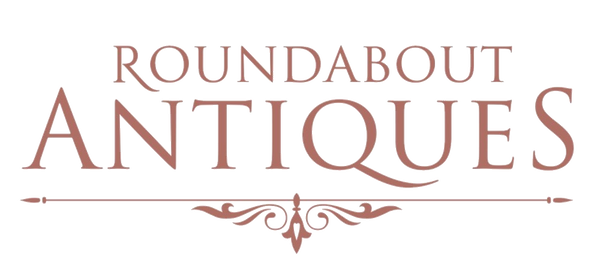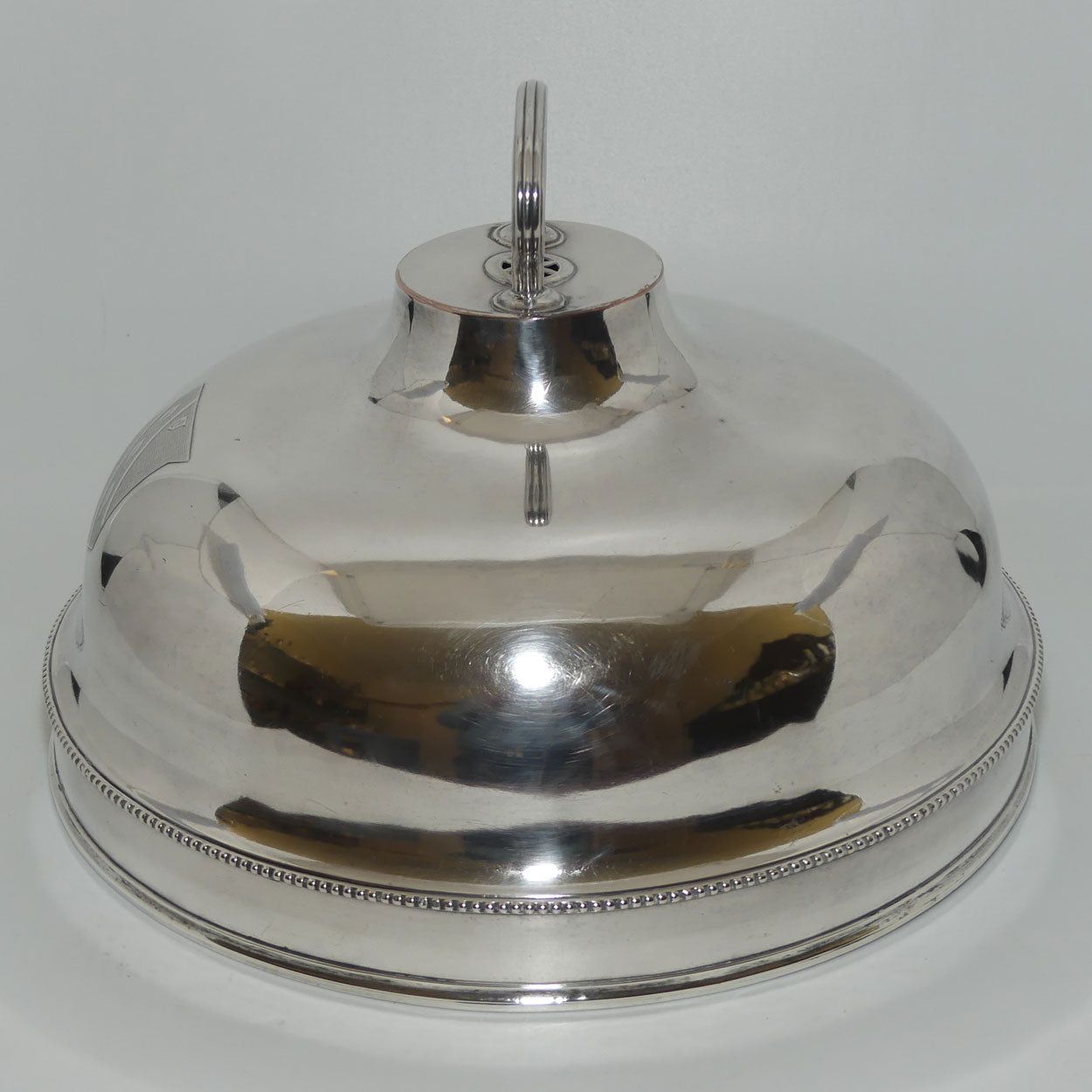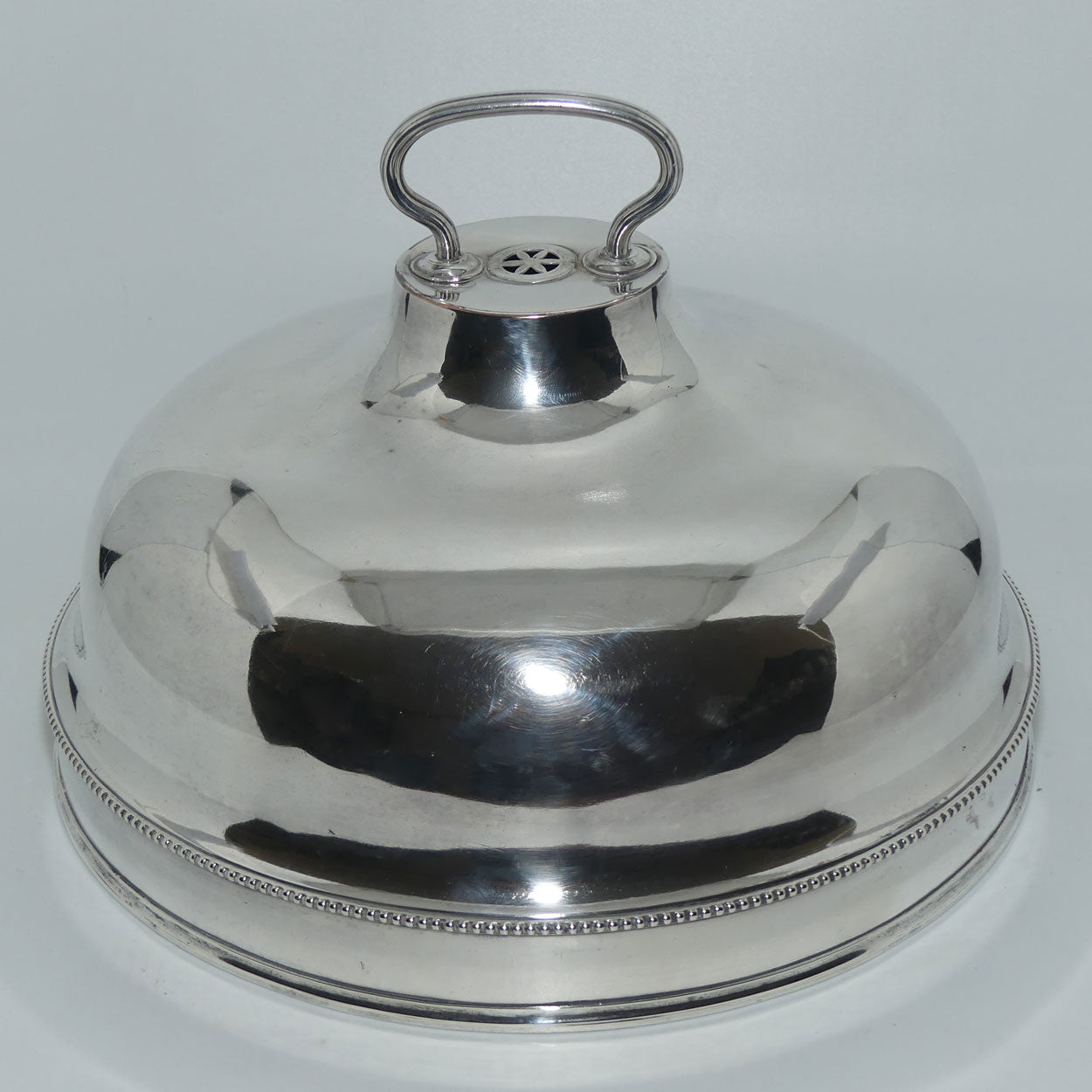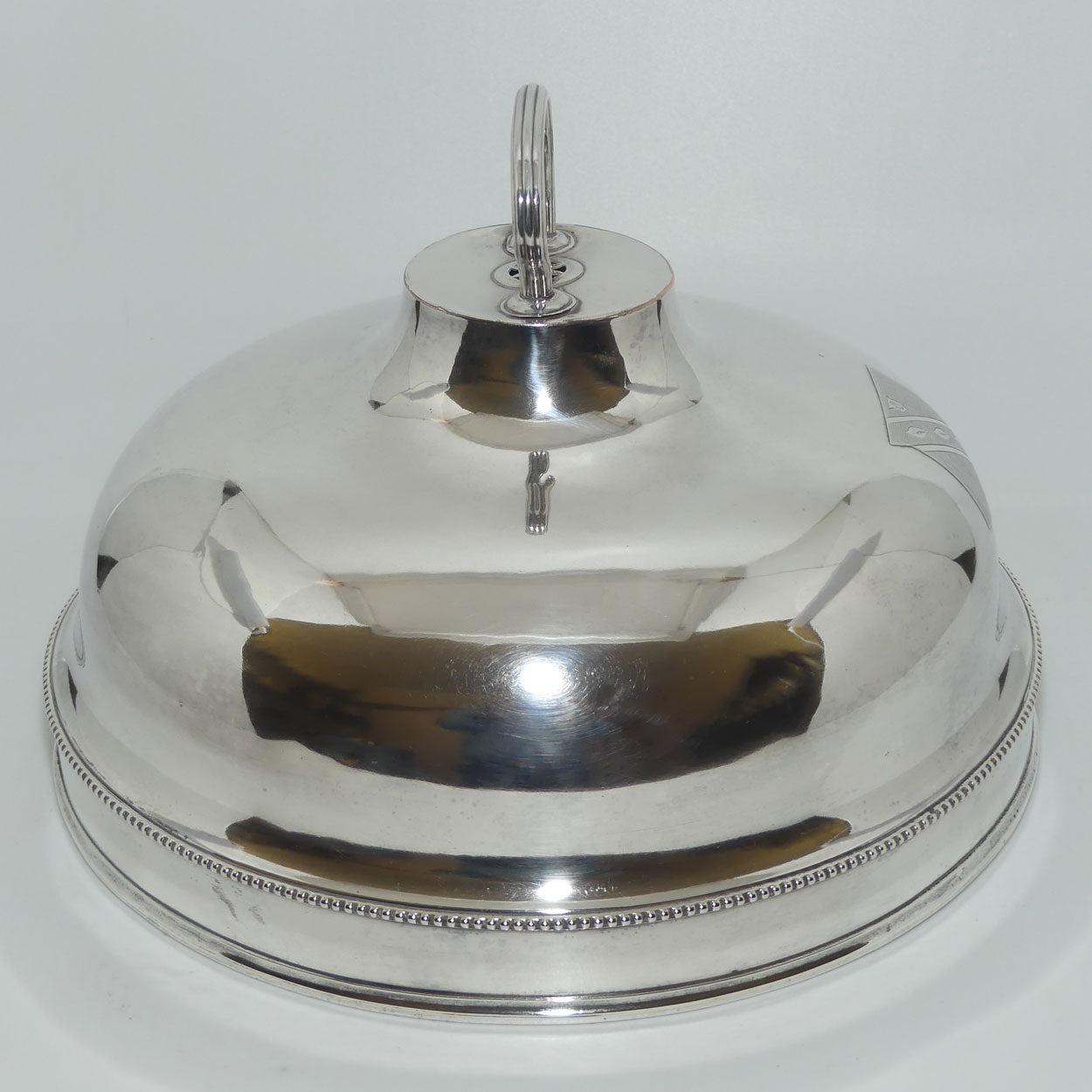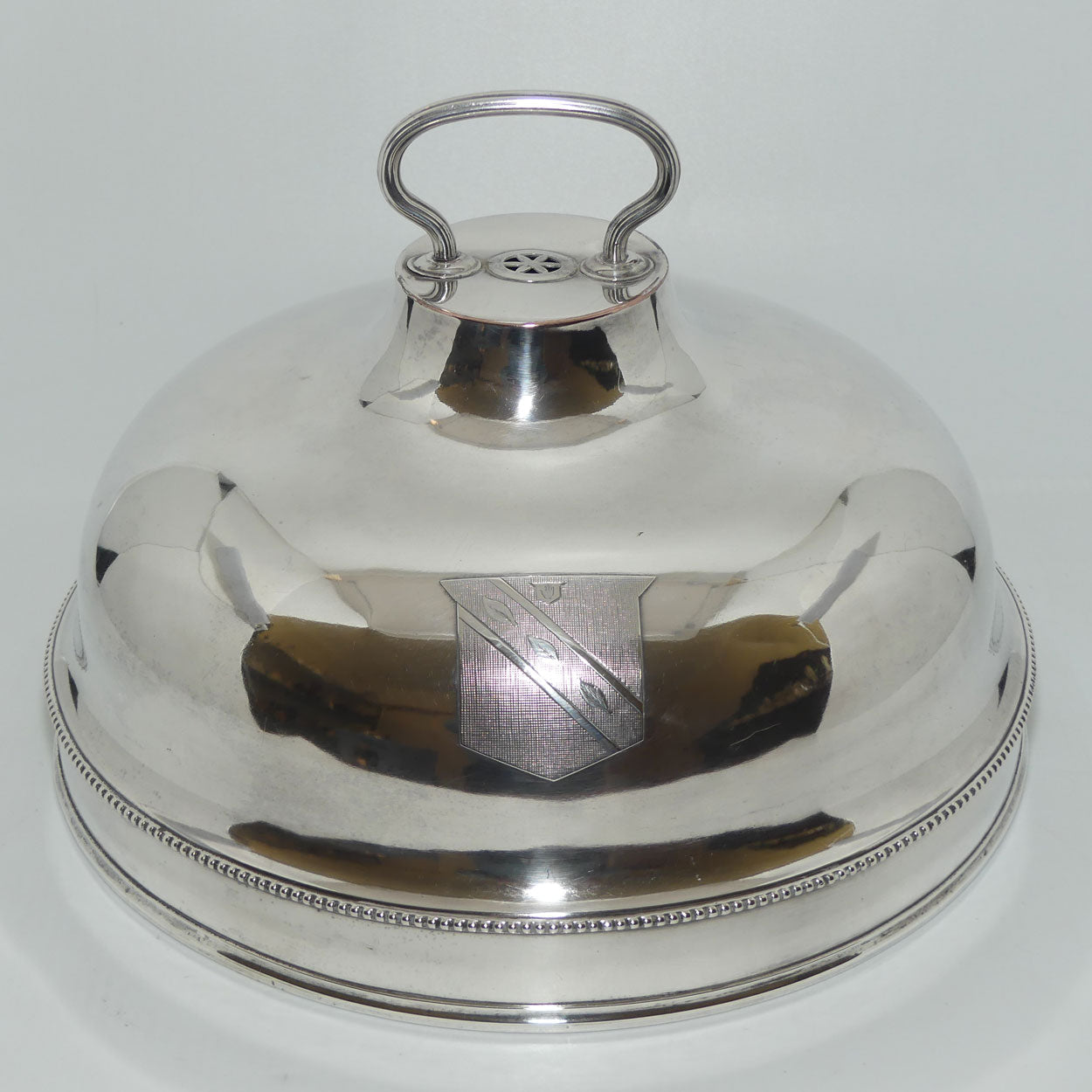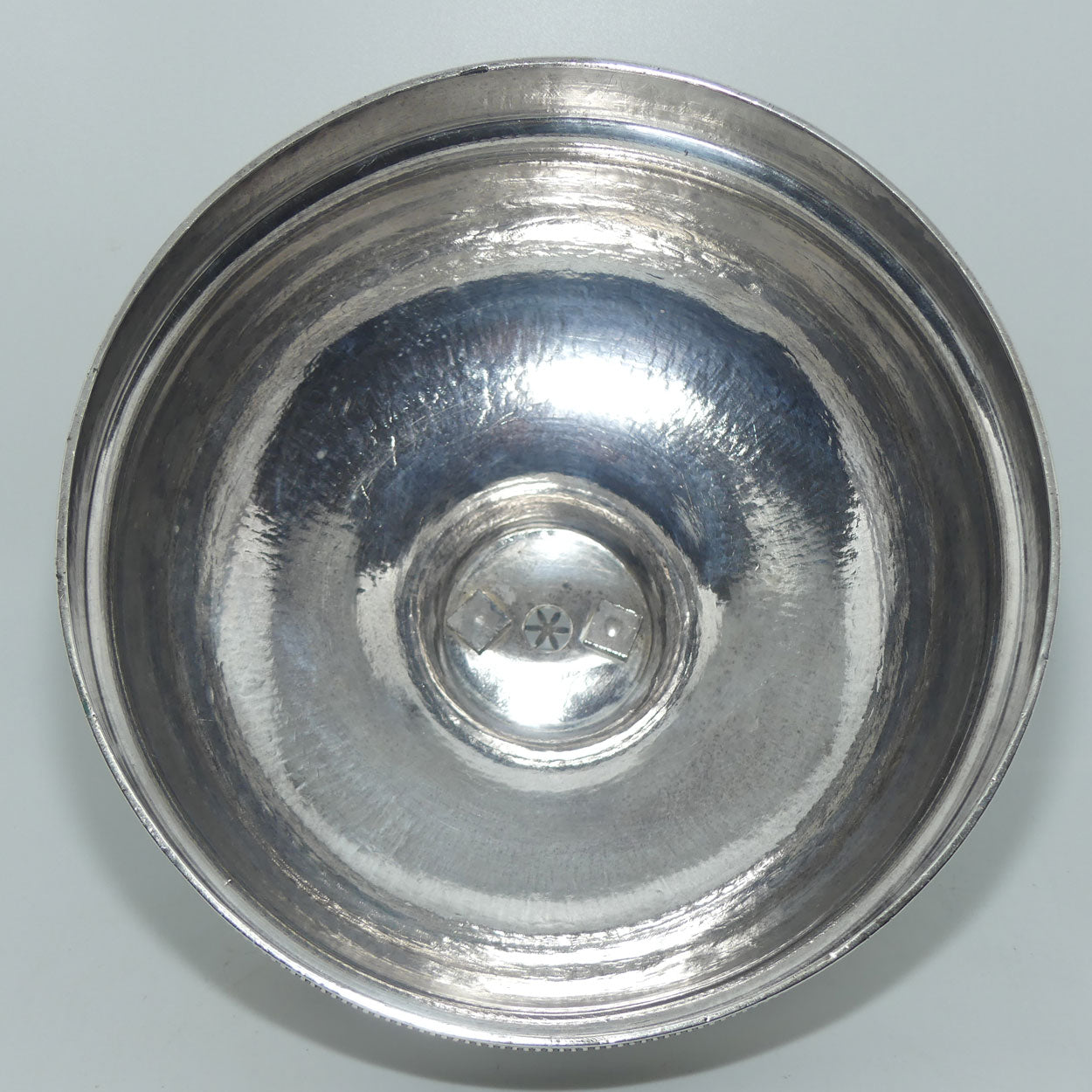Description
Has a beautiful Bright Cut Shield crest, the diagonal stripe having 3 leaves and an oustretched hand, similar to a STOP signal
Unmarked - as most Sheffield plate is - but the quality can never be mistaken!
c.1830
Approx 25.5cms (10") diameter
Approx 17cms (6 3/4") tall
In original condition
On the high points and near handle is some loss of the plating exposing the copper but overall given the age of the piece, quite superb - cover is slightly out of round, but again, given the age, quite superb
What is Sheffield Plate?
Sheffield plate, in metalwork, is generally an item made of copper coated with silver by fusion. The technique was discovered about 1742 by Thomas Boulsover, a Sheffield cutler, who noted that the combination of fused silver and copper retained all the ductility possessed by both metals and acted as one in response to manipulation.
Sheffield plate was produced as follows. An ingot of copper, slightly alloyed with zinc and lead, was covered on both top and bottom with a sheet of silver and fired. When the silver began to melt, the ingot was removed from the furnace, cooled, and rolled. The edges of pieces made were rolled over to hide the copper that was visible when the sheet was cut. At first Boulsover produced only buttons, but his former apprentice, Joseph Hancock, later applied the process to other articles.
The production of fused plate was not restricted to Sheffield alone. In 1762 Matthew Boulton began producing Sheffield plate at Soho, Birmingham, and various workshops in London, Nottingham, and Dublin. Factories in several European countries and North America also made pieces by Boulsover’s method. After 1830 “German silver,” nickel alloyed with copper and zinc, often replaced copper as the base metal. With the introduction of plating by electrolysis in the 1840s, the production of Sheffield plate declined and by the 1870s had all but ceased.
Region:
Condition:
Condition Descriptions
In the main we sell delicate, individually made antique and collectible items that have had a prior ownership history and prior use. We believe that we are extraordinarily exacting in our condition reports of our items – and we describe our items with knowledge and a critical eye developed over decades of experience handling an enormous quantity of similar items. We make every human effort possible to detect or disclose significant age related soiling, damage through use or misuse, or restoration to damage to items on this website. Given the age of the items we sell – minor and insignificant wear, blemishes consistent with the manufacture techniques used in the production of an item or simply evidence of age of a previously owned item (for example fine, clean crazing) is not damage - nor significantly detracting.
For further details refer Clause 2 in our Terms of Service, which you can find here.
Shipping Times
We do not guarantee shipping times - while all best efforts are made to dispatch in a timely manner, we do not guarantee shipping times. If receipt of your order is time sensitive - please contact us to discuss requirements before placing an order, not after placing an order. We cannot guarantee carriers delivery times - they are beyond our control.
Returns and Refunds
Items can be returned if not as described for a refund of the purchase price and shipping – provided that you notify us within 7 days of receipt of the item of your intention to do so. You can do this by emailing or phoning us.
We consider significantly not as described as a failure on our part to detect or disclose significant soiling, damage or restoration. Given the age of the items we sell – minor and insignificant wear, blemishes consistent with the manufacture techniques used in the production of an item or simply evidence of age like fine, clean crazing is not reason to return an item.
Order Cancellations
1.1 If for some reason we cannot supply an item you have ordered (due to our error or an item being lost), we will refund you in full. This may take a few working days for the credit to appear in your account due to banking vagaries. Please note sometimes refunds can differ in quantum due to currency conversions and exchange rate differences.
1.2 If you cancel an order (before we dispatch to you) due to change of mind or concerns about shipping times - we will refund you for the purchase price of the item LESS $25 in administration fees AND a 2.5% restocking surcharge (which is essentially what our bank charges us to receive your payments via credit cards or online payment methods, together with currency conversion fees and other ). Your change of mind incurs expenses for us - these are charges we incur and you pay - we should not lose because of your decision.
1.3 Once an order is dispatched to you, orders cannot be cancelled under any circumstances.
Buyers Remorse
Given the delicate nature of the items we sell and the practicalities of logistics of same, we do not refund for change of mind or buyers remorse. If you purchase an item and when you receive it you find that you already have it in your collection – we will exchange your purchase for other items that we have or failing that, extend a store credit, but the shipping in both directions is your cost. For exchanges and returning for store credit please notify us within 7 days of receipt of the item of your intention to do so. You can do this by emailing or phoning us.
Returning your Item to Us
On returns, the items must be well packed and returned to us in the same high quality manner in which they were sent to you.
Duties and Taxes on Export Sales
We sell our items on a delivered taxes unpaid. Taxes and duties on items ordered overseas (from us located in Australia) are your responsibility. If you fail to pay the duties and taxes on your item and it is returned to us - you WILL NOT be refunded in full.
You will be refunded your purchase price LESS:
(1) the reasonable shipping charges in both directions; and
(2) a $50 as an administration and cancellation fee for receiving the order, packing the order and processing the sale; and
(3) a 2.5% restocking surcharge (which is essentially what our bank charges us to receive your payments via credit cards or online payment methods, together with currency conversion fees and other).
Your failure to pay legal taxes and duties incurs expenses for us - these are charges we incur and you pay - we will not lose because of your decision.
We do not refund taxes and duties if the item has been exported and you desire a return. These are your costs, not ours.
AUSTRALIAN PURCHASES
All Australian purchases are professionally packed to the the highest possible standard and are sent fully Insured Australia Post Signature on Delivery (this is not an option - it is done for your security, and ours). This is a fully trackable service. In some cases with extremely valuable or large items we may deliver personally.
Full details of how we pack are shown in the blog article The All Important Packing Process.
INTERNATIONAL PURCHASES
All International purchases are professionally packed and when Shipping Internationally we use a combination of Australia Post Pack and Track and Australia Post Express Post International (EMS Courier, depending on package size, destination and value of items). All parcels are able to be tracked on line. Full details of how we pack are shown below.
Rest assured, in every transaction, customer satisfaction is paramount and we pack to the highest possible standard.
Full details of how we pack are shown in the blog article The All Important Packing Process.
